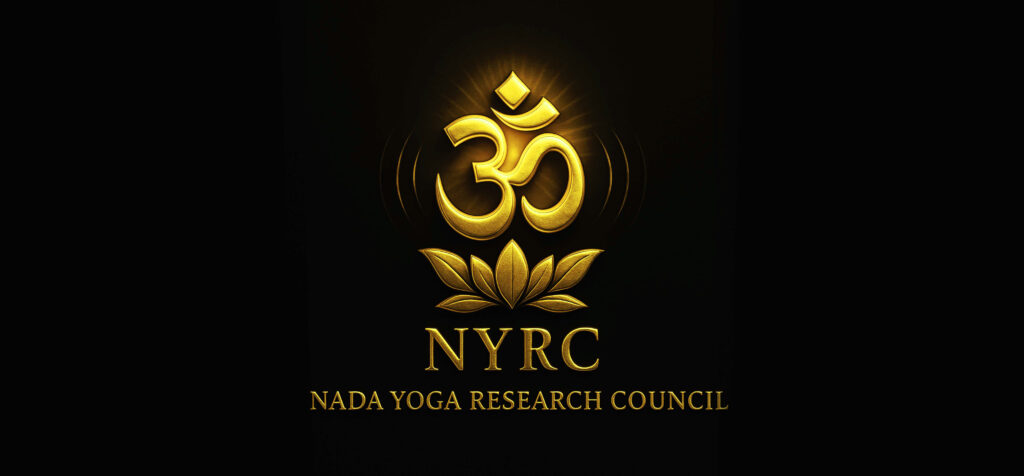By Devrishi — Philosopher and Spiritual Researcher
Abstract
Swara Yoga is an ancient yogic science based on the subtle observation and regulation of breath, particularly its flow through the nostrils. This paper delves into the origins of Swara Yoga as documented in the Shiva Swarodaya, explores its philosophical foundations rooted in Advaita Vedanta, prana theory, and metaphysics, and discusses its psycho-physiological principles and practical applications in meditation, health, and daily decision-making. Further, the paper compares traditional Swara Yoga with modern scientific research on nasal dominance, brain hemispheric activation, and the autonomic nervous system. The analysis reveals that Swara Yoga is not merely a spiritual or esoteric concept but a profound system that unites ancient intuitive knowledge with modern neurophysiological understanding.
1. Historical Background: In the Light of Shiva Swarodaya
Swara Yoga has its roots in ancient Indian tantric and yogic traditions. The term Swara means “sound” or “breath-flow,” while Yoga implies union with the supreme consciousness. Thus, Swara Yoga is the art and science of aligning one’s breath with cosmic rhythms to attain higher states of awareness. The earliest and most authoritative text on Swara Yoga is the Shiva Swarodaya, a dialogue between Lord Shiva and Goddess Parvati. The scripture comprises 395 verses describing the laws of breath flow, the influence of lunar and solar energies, the five elements, and how these principles govern every aspect of life.
Historically, Swara Vidya was considered a secret, sacred science, preserved only for sages and kings. According to the text, mastery of Swara Yoga could make one independent of calendars and astrological charts; knowing the breath’s rhythm was enough to determine the auspiciousness of any action. This esoteric knowledge guided decisions in war, diplomacy, construction, and even predictions of weather and death. The revival of this knowledge in the modern era is largely attributed to Swami Satyananda Saraswati of the Bihar School of Yoga, who translated and elucidated the Shiva Swarodaya in the 1980s, bringing global attention to this ancient science.
2. Philosophical Significance of Swara Yoga
Beyond physiology, Swara Yoga is grounded in profound philosophical insights. From the lens of Advaita Vedanta, the breath becomes the bridge between the individual self (jivatma) and the universal self (paramatma). The Shiva Swarodaya describes the creation of the universe through the five elements (Pancha Mahabhutas): space, air, fire, water, and earth—emerging in succession from the unmanifested Supreme. These elements form the metaphysical foundation of Swara Yoga. The breath, imbued with prana (vital force), is seen as the subtle medium through which these cosmic elements operate within the body.
Swara Yoga helps the practitioner realize the philosophical dictum “Yatha Pinde Tatha Brahmande” — as is the microcosm, so is the macrocosm. The body mirrors the cosmos, and the breath is the axis through which this reflection is understood and harmonized. The left nostril (Ida) is associated with lunar energy, introversion, calmness, and the right hemisphere of the brain. The right nostril (Pingala) governs solar energy, extroversion, vitality, and the left brain. When both nostrils flow equally, the central Sushumna nadi is said to be active, allowing access to meditative absorption (samadhi) and states of unity beyond duality. Thus, Swara Yoga becomes a practical path to the realization of non-dual consciousness.
3. Rules and Effects of Nasal Breathing
Modern science now confirms what yogis observed millennia ago — that the human body alternates nasal dominance approximately every 60 to 240 minutes, known as the nasal cycle. Each nostril is linked with specific physiological and neurological patterns. Swara Yoga divides breath flow into three types:
- Ida Nadi (Left Nostril) – Cooling, calming, associated with mental functions, parasympathetic nervous response, and the right brain.
- Pingala Nadi (Right Nostril) – Heating, energizing, linked with physical activity, sympathetic response, and left-brain stimulation.
- Sushumna Nadi (Both nostrils equally) – Balanced, meditative state, ideal for spiritual practice.
When one nostril dominates, specific types of activities are more beneficial. For example, left-nostril breathing (Ida) is suited for reading, worship, and introspective tasks. Right-nostril breathing (Pingala) supports physical work, debates, or short travel. The Shiva Swarodaya even advises actions such as stepping out of bed using the foot on the side of the dominant nostril to ensure auspicious outcomes. It also describes how to voluntarily change the active nostril for desired outcomes—something confirmed by modern studies which show that lying on one side can shift nasal dominance. In essence, the breath becomes a subtle biological compass, guiding life’s decisions in harmony with internal and external rhythms.
4. Application in Meditation, Therapy, and Daily Life
Swara Yoga is not limited to esoteric knowledge. Its practical applications span meditation, health, and daily activities.
- Meditation: When both nostrils flow equally (Sushumna), it is the most favorable time for deep meditation, as the mind is naturally balanced. Swara Yoga practitioners learn to induce this state to enter meditative absorption more easily.
- Healing: Ancient texts and modern studies both highlight the therapeutic effects of nostril breathing. Left-nostril breathing reduces blood pressure, heart rate, and stress levels (activating parasympathetic response), while right-nostril breathing increases energy and heat (activating sympathetic response). Breathing patterns have been shown to affect not only the nervous system but also digestive, endocrine, and immune responses.
- Daily Decisions: Swara Yoga provides a breath-based decision-making framework. Activities ranging from travel, business, communication, and spiritual rituals are best timed with the appropriate breath flow. Even answers to questions could be inferred based on which nostril is active when someone approaches, according to traditional Swara logic. While this may sound mystical, the underlying philosophy is that breath reflects our alignment with the subtle flow of time and energy, offering intuitive insight into the best course of action.
5. Comparison with Modern Scientific Studies
Scientific research over the last few decades has begun to validate Swara Yoga principles.
- Nasal dominance: The nasal cycle is well documented. It is regulated by the autonomic nervous system. Left-nostril dominance correlates with right-hemisphere brain activity and parasympathetic dominance; right-nostril with left-hemisphere activation and sympathetic stimulation.
- Brain studies: Research using EEG and fMRI has shown that unilateral nostril breathing stimulates the opposite hemisphere of the brain. Verbal tasks improve with right-nostril breathing; spatial tasks with left.
- Heart-respiration: Breathing affects heart rate and blood pressure. Studies show that left-nostril breathing can significantly reduce hypertension, anxiety, and induce calmness.
- Therapeutic benefits: Practices like alternate nostril breathing (Anulom-Vilom) — a derivative of Swara Yoga — are shown to improve sleep, reduce depression and anxiety, balance brain hemispheres, and enhance cognitive flexibility.
These findings suggest that breath is not merely a respiratory mechanism but a regulator of neurological and psychological balance. Swara Yoga, thus, anticipates several findings of neuroscience and psychophysiology, pointing to its untapped potential in integrative medicine and consciousness studies.
Conclusion
Swara Yoga stands as a timeless science that merges the metaphysical, philosophical, and physiological dimensions of human life. What ancient yogis intuited through inner experience, modern science is now beginning to confirm through observation and experiment. The rhythm of the breath, as taught in Shiva Swarodaya, is not just about air—it is about awareness. It shows us that by observing and regulating our breath, we can synchronize with universal energies, harmonize body and mind, and elevate our consciousness.
As a philosopher and spiritual researcher, I see Swara Yoga not merely as a tool for wellness but as a doorway to self-realization. It teaches us that every breath is a message, a mirror, and a mantra — and when we learn to listen to that breath, we begin to understand the language of the cosmos itself.
Swara Yoga is, indeed, the science of conscious living.
Devrishi – Academic & Research Portfolio
Research Identity
Devrishi is an Indian philosopher, sonic mystic, and spiritual researcher, renowned for reviving Swara Yoga and Nada Yoga as integrated spiritual-scientific systems. Founder of the Nada Yoga Research Council, he explores the intersection of sound, consciousness, and Vedic metaphysics.
Research Profiles
Published Works
- Swara Yoga – SSRN
- A Life Changing Approach – Biography of Padma Shri Satendra Singh Lohiya
Swara Yoga on Zenodo
This paper is also available on Zenodo:
https://doi.org/10.5281/zenodo.15171326Upcoming Papers
- Sound Cosmology – Vol. 1
- Naad Darshan Manifesto
- Water Beyond Earth
Contact & Collaborations
Scholars and spiritual seekers are welcome to collaborate on Sound Philosophy, Vedic Sciences, and consciousness-based healing research.
Email: mail@nyrc.in
“Through collaboration, let us awaken the shared sacred sound of consciousness across all dimensions.”















